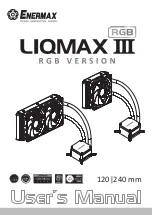
Additional Peripheral Power Management Considerations
201
SPRUH82C – April 2013 – Revised September 2016
Copyright © 2013–2016, Texas Instruments Incorporated
Power Management
9.10.2 DDR2/mDDR Memory Controller Clock Gating and Self-Refresh Mode
The DDR2/mDDR memory controller supports different methods for reducing its power consumption
including self-refresh mode, power-down mode, and clock gating. Additionally, the DDR2/mDDR memory
controller DLL, PHY, and the receivers at the I/O pins can be disabled. Even if the PHY is active, the
receivers can be configured to disable whenever writes are in progress and the receivers are not needed.
Self-refresh mode can be used to preserve the contents of DDR2/mDDR memory when the DDR2/mDDR
memory controller is clock gated or when the device is placed in RTC-only mode. However, in the RTC-
only mode, care must be taken to correctly take the DDR2/mDDR out of self-refresh mode.
NOTE:
To preserve the contents of the external memory while the DDR2/mDDR memory controller
is clock gated, its self-refresh mode must be enabled before the DDR2/mDDR memory
controller clock is turned off.
In RTC-only mode, all portions of the device except for the RTC are powered down, including the
DDR2/mDDR memory controller. During power-up, the DDR2/mDDR memory controller defaults to its
reset state. When the DDR2/mDDR memory controller is taken out of reset, it automatically runs its
memory initialization routine; the self-refresh state of the memory is ignored. This hardware sequence
cannot be stopped by software running on the device.
To correctly take the memory out of self-refresh after coming back from RTC-only mode, follow these
steps:
1. Before going into RTC-only mode, disconnect the DDR2/mDDR memory controller CKE output pin
from the memory; ensure the memory’s CKE input pin continues to be driven low.
2. After coming back from RTC-only mode, configure the device to the desired operating state.
3. Program the DDR2/mDDR memory controller following the normal sequence.
4. Enable the self-refresh mode of the DDR2/mDDR memory controller.
5. Connect the DDR2/mDDR memory controller CKE output pin to the memory.
6. Disable the self-refresh mode of the DDR2/mDDR memory controller.
After this sequence, the DDR2/mDDR memory controller is ready for use. Note that hardware logic is
needed to disconnect the CKE output pin from the memory and to drive the memory’s CKE input pin low.
For more details on the power management features of the DDR2/mDDR memory controller, see the
DDR2/mDDR Memory Controller
chapter.
9.10.3 SATA PHY Power Down
The SATA PHY supports a standby power mode that yields significant power reduction during periods in
which the PHY is not used. In applications in which the SATA is not used at all, the power supply to the
SATA PHY can be left unconnected.
9.10.4 LVCMOS I/O Buffer Receiver Disable
This device supports two types of LVCMOS I/Os: 1.8V I/Os and low-static current dual-voltage I/Os that
operate at either 1.8V or 3.3V. The receivers on the LCVMOS I/Os are enabled and disabled by software
(see the RXACTIVE Control Register (RXACTIVE) in the
System Configuration (SYSCFG) Module
chapter). In the event that certain receivers are not used (such as in a low-power state), they can be
disabled to conserve power.
















































